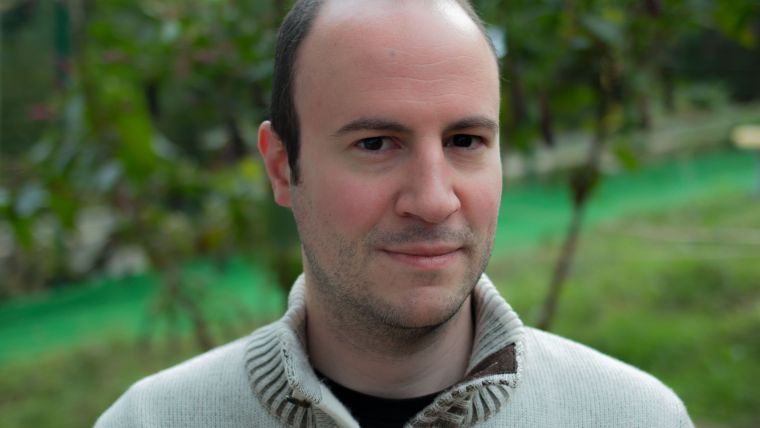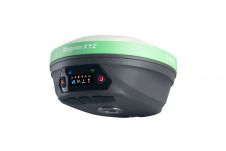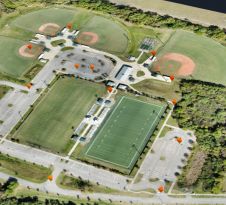Overcoming the Bottlenecks of Today’s Dense Point Clouds
GIM International interviews Murat Arikan, NUBIGON
NUBIGON is a start-up company with offices in Turkey and Austria that has developed powerful reality capture software. The company’s solution visualises Lidar and photogrammetric point clouds in real time and in full HD, while retaining the accurate precision that is needed by many professionals who are working with point clouds. 'GIM International' decided to interview Murat Arikan, the company’s ambitious founder and lead software developer, to find out more.
NUBIGON specialises in software to visualise 3D point clouds acquired by Lidar or photogrammetry. What are the main bottlenecks in the visualisation of today’s dense point clouds?
The most prominent bottleneck in the visualisation of today’s dense point clouds is data size. Today, just one scan position generated by a decent 3D laser scanner is almost 1GB. In contemporary projects, scanned environments generally have huge dimensions (airport terminals, factories, etc.) and acquiring these spaces properly can require tens or even hundreds of scan positions so that almost always results in ‘big data’. Most of the 3D point cloud software currently on the market cannot handle that amount of data. The second most important bottleneck is the quality of the visualisation, which is directly connected to the data size issue. In the era of high-quality rendering in games and movies, the visualisation quality of point clouds is not sufficient. Last but not least, another bottleneck is the interaction with 3D point clouds. Most of the time, users want to work in CAD software environments, but point cloud software generally offers limited integration with them. Although there are plug-ins for CAD software for easier integration, users still face a clash of different file types and hard-to-manage workflows. At NUBIGON, we overcome these bottlenecks with state-of-the-art algorithms and tools.
In which application domains is your software mainly used at present, and what further potential uses does it have?
At present, our focus is on archaeology and architecture. Our motto is “NUBIGON is the software that makes life easier for architects”. Most current methods for architects are outdated (tape measures, rangefinders, orthophotos and so on) and offer room for improvement. Our users take measurements, create floor plans and make architectural 3D CAD drawings directly on the point cloud and export the results to the CAD software of their choice. Hence, they don’t waste time converting 3D point clouds to other formats (e.g. mesh, orthophoto). But this doesn’t mean that NUBIGON is not capable of working with meshes or cannot export orthophotos. We offer our customers a new and streamlined workflow to capture reality. NUBIGON’s tools are made by designers, for designers. At NUBIGON, we always put the user experience first.
The density of point clouds is steadily increasing. Meanwhile, researchers are working hard on creating smart points clouds in which semantic information is attached to each and every point. How do you plan to ensure your software keeps pace with these rapid developments?
Actually, we’re very happy that researchers are constantly enriching points clouds. Our first goal was to turn point clouds into a usable and visually appealing medium; all our research efforts were focused on that for years. Now that we’ve achieved that goal, we have launched two new R&D projects this year. One of them is about searching for shapes in point clouds so that walls, doors and roofs can be recognised automatically. Our other R&D project is almost coming to an end; it is about streaming NUBIGON to all devices (including smartphones, tablets and Apple computers). In terms of the application for mobile devices, we’re not talking about a simple mobile app here. Right now we are in the prototype stage and NUBIGON is capable of streaming its full functionality to any device. Besides that, we’re enabling users to work concurrently on the same scene.
What are the basic components of your business model?
We are following the lean start-up model and we’ve built our business model entirely around that idea. We offer a fixed-price software-as-a-service (SaaS) solution. We created our business to solve our customers’ problems, not to overwhelm them with complex licensing models. We think that the idea of not wasting anyone’s time shouldn’t only apply for our investors or business partners but also for our customers; when we talk about “making life easier”, we mean it!
NUBIGON is a spin-off from your PhD research activities at the Vienna University of Technology in Austria. Why did you decide to expand your knowledge by establishing a company?
My long-time friend Can Turgay helped me to realise that the research I conducted could be exploited commercially with the right approach. In my past career as a researcher, I wondered whether my research would produce usable results in the real world or only patents gathering dust on the shelf. Thanks to my friend’s support, the idea of applying my research to real-world problems influenced me and I decided to pursue this commercial idea with him in late 2014.
Like Racurs, a photogrammetric company based in Moscow, Russia, NUBIGON was established by four people. Do you think four could be a magic number for future success?
I don’t think that there is a magic number for future success. A team of hard-working, like-minded and skilled people is the real key to success. Our team consists of individuals who are experts in their own profession, and every member of the team brings something different to the table. It’s the combination of our skills that advances NUBIGON in business.
Your company is based on a ‘technopark’ in Istanbul. What are the advantages of exploring a technology-driven business under the wings of a technopark?
Yes, one of our offices is located on a technopark in Istanbul. In general, technoparks are great places to meet like-minded entrepreneurs, and networking within a technopark especially helps you to solve lots of common problems. It has been really beneficial to be in touch with companies that have followed a similar path to ours, as some of the problems we were facing during the development of NUBIGON were common among start-ups. Also, the technopark management's support for the commercialisation of our ideas proved a unique benefit.
What are your ambitions, and where do you want NUBIGON to be in five years’ time?
Right now we are operating in two countries, but our customers are all over the world. To reach them properly, we need to expand into different continents. This autumn, we’ll conduct a feasibility study for expanding into the US market. Personally, I want to see that my research helps people in their daily lives. If we, as a company, can have a little impact on shaping a world in which industry professionals use point clouds to enhance their capabilities, I’ll say “job well done.” In five years from now, I hope NUBIGON will be a point-cloud software pioneer.
Do you have any advice for young researchers who want to set up a business of their own?
First and foremost, the most important issue is that they need to understand that they cannot do everything on their own. No matter how well-equipped they are, a successful business needs a great team. They need partners they can trust, and to use their talents and time effectively. Research, development, sales, management and marketing are all areas that require a very different perception and ability. For a company to succeed, all these aspects must be successfully managed. It’s not possible for just one person to have so many talents. Another recommendation for young researchers is that they need to set goals which can translate into a business. Only research that can be applied in practice creates good scenarios for start-ups. Their aim should always be to create a minimum viable product.
About Murat Arikan
Murat Arikan gained his MSc in mathematics from TU Wien in Vienna, Austria, in 2008. He is a doctoral candidate at the Institute of Computer Graphics and Algorithms of TU Wien. Throughout his doctoral research, he participated in numerous research projects and has co-authored five papers on the topic of reconstruction and visualisation. Thereafter, he formed a team that developed the point-cloud processing software NUBIGON, which provides commercial reality-capturing solutions in the fields of architecture, archaeology, engineering and construction. He is the lead software developer of NUBIGON. He resides in Austria.

Value staying current with geomatics?
Stay on the map with our expertly curated newsletters.
We provide educational insights, industry updates, and inspiring stories to help you learn, grow, and reach your full potential in your field. Don't miss out - subscribe today and ensure you're always informed, educated, and inspired.
Choose your newsletter(s)
























